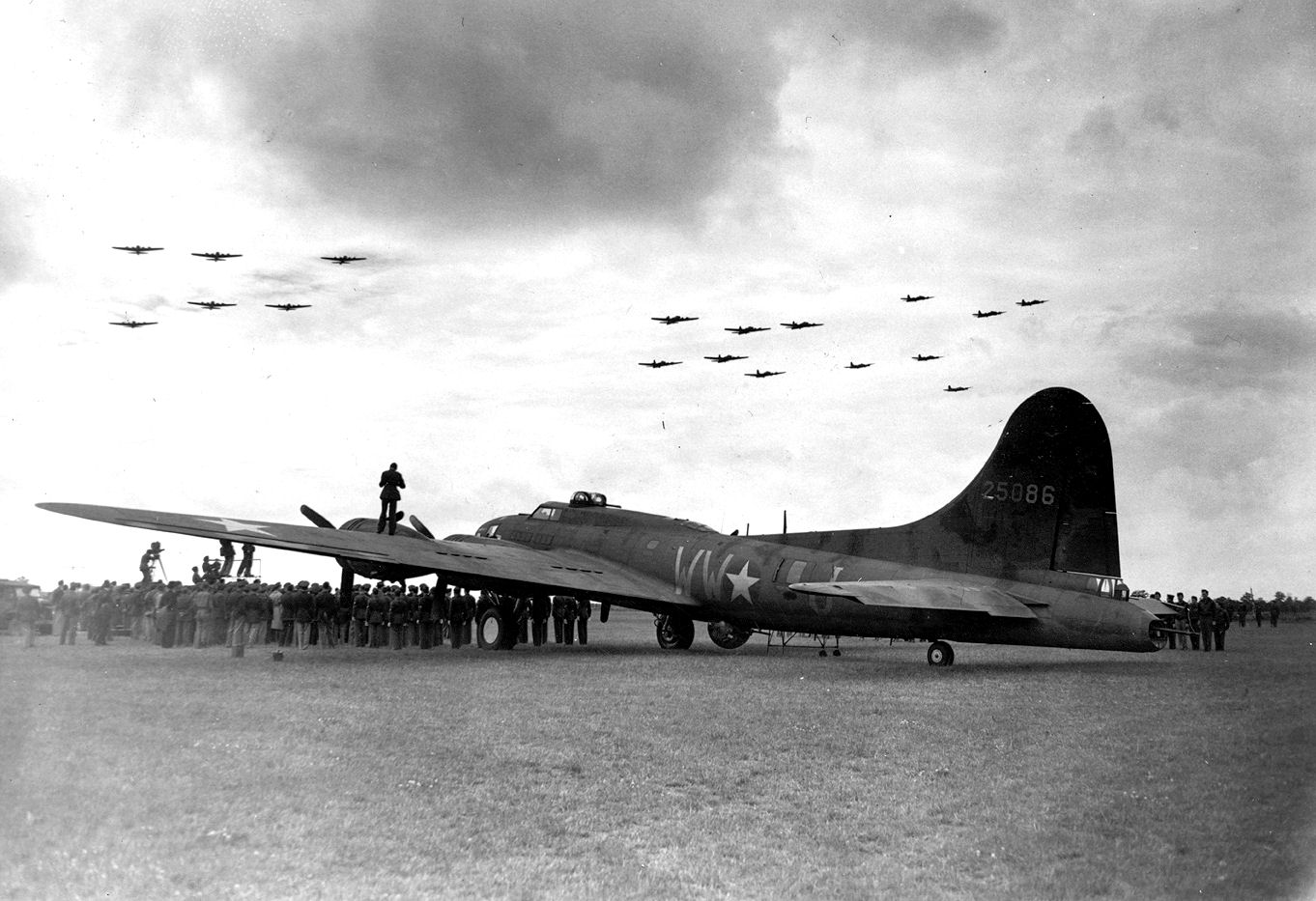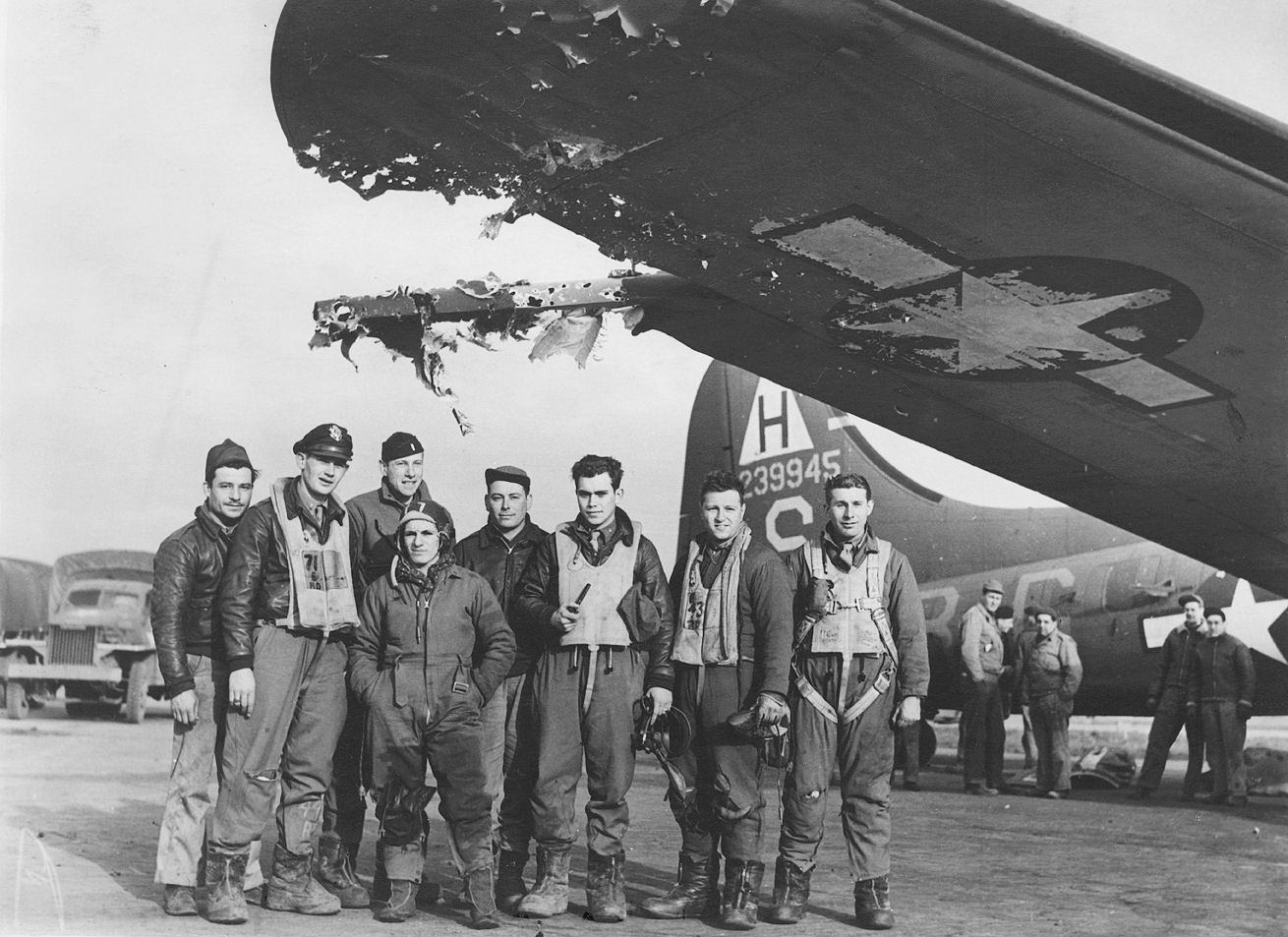I'm Pleased to announce the first official Bomb Group has been formed for Fortress Europe.
Under the command of Myself and XO: APdrone, the "Reich Wreckers" are ready to take the fight to the enemy. Any bomber pilot wanting to join is more than welcome! We hope to have a super tight crew ready for the first official Fortress Europe Mission, which will begin in May.


A brief history of the 306th in WW2.
The group was activated 1 March 1942 at Salt Lake City Army Air Base, Utah. Personnel moved to Wendover Army Air Field, Utah on 6 April 1942 and began flying training, where it trained for bombardment operations using 40 B-17E aircraft. Group left Wendover 1 August 1942 to begin movement to the United Kingdom. The Ground unit first moved to Richmond AAB, Virginia and remained a week before leaving for Fort Dix, New Jersey. On 13 August 1942, the Group's personnel sailed on the RMS Queen Elizabeth on 30 August 1942 and arrived 5 September 1942 at Greenock, Scotland. The aircraft flew from Wendover to Westover Field, Massachusetts on 2 August 1942. The remainder of the Group departed for the United Kingdom on 1 September 1942 via Gander-Prestwick ferry route.
Based at RAF Thurleigh, Bedfordshire, in south-central England, as part of the Eighth Air Force, the 306th was the longest continuously-serving bomb group of the Eighth Air Force during World War II, and led the first mission against a target in Germany. The novel and film Twelve O'Clock High were based in large part on incidents occurring in the group in 1942 and 1943.
Between October 1942 and April 1945, the Group bombed a variety of enemy targets in Europe, including railroad facilities and submarine pens in France and ball-bearing works, oil plants, marshaling yards, chemical plants, aircraft factories, and foundries in Germany. Took part in the first penetration into Germany by heavy bombers of the Eighth Air Force on 27 January 1943 by attacking the U-boat yards at Wilhelmshaven.
Sergeant Maynard Harrison Smith received the Medal of Honor for his actions on 1 May 1943. When the aircraft on which he was a gunner was hit by the enemy and set on fire, the sergeant threw explosive ammunition overboard, manned a gun until the German fighters were driven off, administered first aid to the wounded tail gunner, and extinguished the fire.
The 306th was the center of media attention on 6 July 1944, when Thurleigh was visited by the British Royal Family. As cameras rolled, King George VI, his wife Queen Elizabeth, and their daughter Heiress Presumptive Princess Elizabeth (the future Queen Elizabeth II) were led to a new B-17G of the 367th Bomb Squadron. The new replacement aircraft had been named Rose of York in honor of the 18-year-old Princess, who ceremonially christened the bomber. On her 50th mission on 3 February 1945, Rose of York was hit by flak over Berlin; she disappeared over English Channel or North Sea while returning home.[6][note 1][note 2]
Without fighter escort and in the face of powerful opposition, the group completed an assault against aircraft factories in central Germany on 11 January 1944, earning a Distinguished Unit Citation (DUC) for the mission. The group participated in the Big Week intensive campaign against the German aircraft industry, 20–25 February 1944. The group earned another DUC for effectively bombing an aircraft assembly plant at Bernberg, Gummersbach, Germany on 22 February, even though escort fighters had abandoned the mission because of weather. Often supported ground forces and attacked interdictory targets in addition to its strategic operations. Hit airfields and marshaling yards in France, Belgium, and Germany in preparation for Normandy. On D-Day, 6 June 1944, the unit raided railroad bridges and coastal guns in support of the assault. Assisted ground forces during the Saint-Lô breakthrough in July, then participated in the airborne portion of Operation Market Garden, the invasion of the Netherlands in September. During the Battle of the Bulge, December 1944 – January 1945, the 306th attacked airfields and marshaling yards to help stop the German advance. Bombed enemy positions in support of the airborne assault across the Rhine River in March 1945, the Operation Varsity portion of the Western Allied invasion of Germany.
Selected for duty with occupational air forces in Germany. The unit engaged in "Casey Jones" mapping photography project. Group then moved to Giebelstadt, Germany on 1 December 1945, and on 28 February 1946 to Istres, France, where it absorbed the remnants of the 92nd and 384th Bomb Groups. In August 1946 the unit re-established in Germany at Furstenfeldbruck and in September 1946 located at Lechfeld. The unit inactivated on 25 December 1946, although the group had virtually ceased to exist as flying unit in the late summer of that year. Inactivated December 1946, the group received the Distinguished Unit Citation with one Oak Leaf Cluster and six campaign stars.